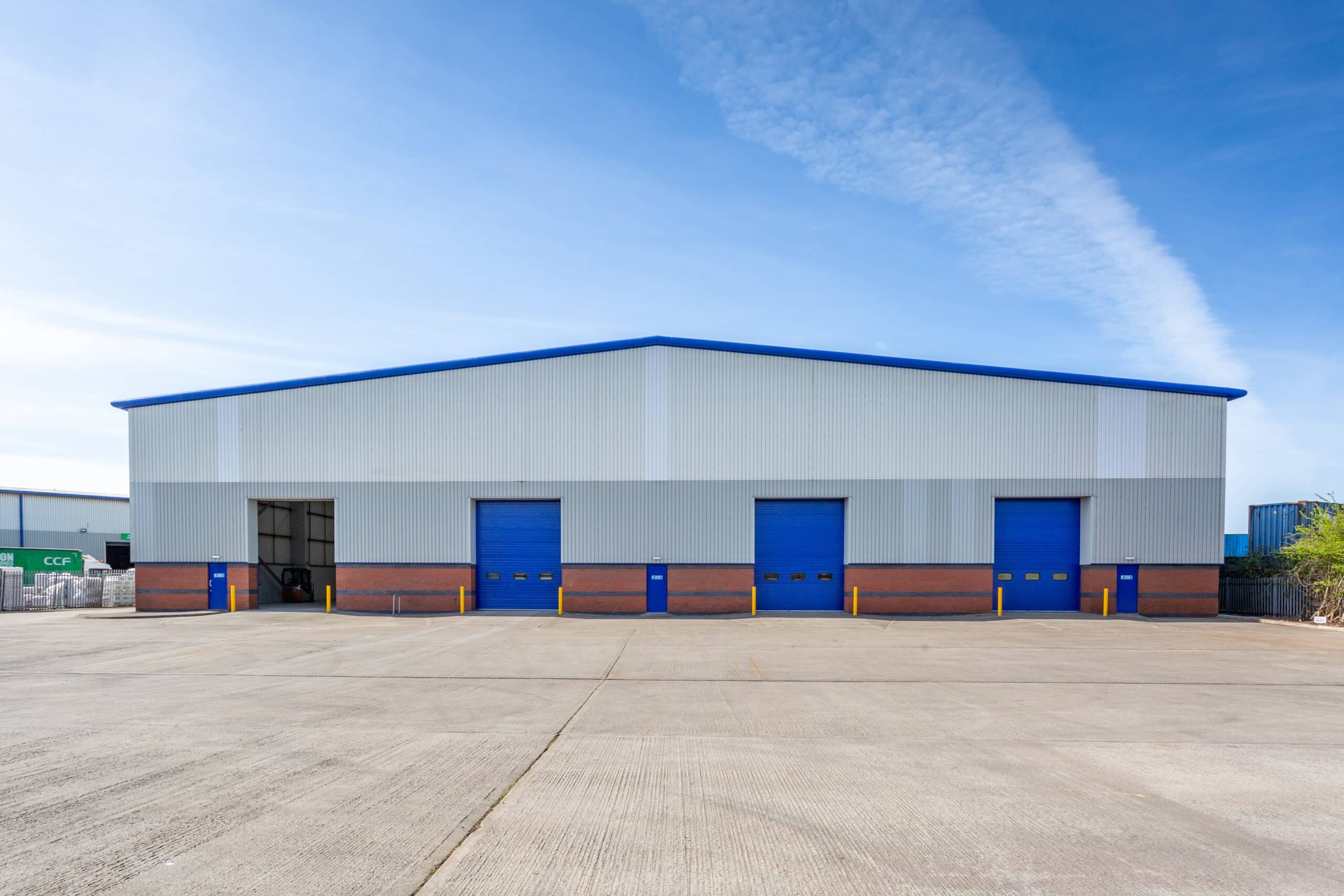For modern warehouses to run at their peak efficiency today, it’s necessary to deploy advanced tools and software for warehouse capacity planning. When approached manually, or without the proper tech stack, operational excellence in this category can be challenging: inventory is constantly moving into and out of your warehouses, workers need to navigate your shelves, and real-time monitoring is necessary to track stock levels. Instead of relying on guesswork, spreadsheets, or disjointed technological solutions, you can instead turn to certain tools and software, specifically designed for warehouse capacity planning, to optimize the use of space and resources within your warehouse.
What is Warehouse Capacity Planning, Exactly?
Warehouse capacity planning is a strategic process which allows you to efficiently store and move inventory, while minimizing waste and inefficiencies. It’s a process that’s not only rooted in the present, by making sure your warehouse is optimized for today, but it also ensures that you have enough space (and the proper organization) to meet anticipated future demand.
Warehouse capacity planning allows you to do several things:
- Inventory management: Understanding what products you currently have, how much of each, and their turnover rate helps you determine the storage space and organization systems needed in your warehouses.
- Space utilization: Analyzing how effective your space utilization is, and balancing inventory across different locations.
- Order fulfillment: Optimizing picking, packing, and shipping processes (thanks to data and insights) to ensure smooth, consistent order fulfillment without bottlenecks.
- Demand forecasting: Predicting future sales trends and inventory needs, to not only order accurately, but ensure you have the capacity and resources for upcoming fluctuations.
Benefits of Using the Right Tools and Software for Warehouse Capacity Planning
Today’s warehouses are navigating an unprecedented surge in demand for their inventory, and for speedy service. Research shows that the number of SKUs on the rise, while ecommerce in general is growing in popularity by billions of dollars annually. Not only that, but customers today have come to expect faster deliveries. Warehouse capacity planning technology can be the foundation you need to reliably approach your warehouse and navigate these parameters and needs.
With that in mind, the benefits of using tools and software for warehouse capacity planning include:
- Enhanced accuracy: Manual calculations, spreadsheets, and outdated technological systems can be error-prone, unintuitive, and difficult to use. The right warehouse software automates data collection and analysis, eliminating human error and ensuring your warehouse strategy is built on the most precise information possible. This translates to better space allocation and warehouse processes.
- Increased efficiency: Say goodbye to time-consuming manual processes, or challenging technology that depletes your time and energy. Today’s warehouse capacity tools streamline your processes, and ultimately your decision-making. Keep in mind that these tools often automate tasks like inventory tracking, space utilization analysis, and order fulfillment.
- Unmatched visibility: With the right technology in place for warehouse capacity planning, you can gain real-time insights into every aspect of your warehouse. That’s because these tools give you a comprehensive view into things like inventory levels, space utilization, order fulfillment capabilities. This can also be key for identifying bottlenecks and determining optimal resource utilization.
- Improve demand planning capabilities: When you have a better handle on what inventory is in your warehouse, how it’s moving, and how it’s expected to move, you can better execute demand planning. This is the process of using your demand forecasts to inform your inventory buying habits. Warehouse capacity planning technology can act like “missing piece” of the puzzle, allowing you to connect your warehouse logistics to your demand planning.
- Data-driven decision-making: Warehouse capacity tools give you the data and analytics you need to make informed decisions in your warehouse, about everything from seasonal fluctuations to upcoming promotions. For example, you can simulate how a new product launch might impact your warehouse layout and storage, or predict the staffing needs for an upcoming holiday rush.
- Optimized warehouse staffing: By using the right tools and software for warehouse capacity planning, you can also manage your warehouse space and staff better. That’s because these tools help you identify peak periods, so you can strategically schedule labor to ensure efficient order fulfillment. Additionally, with better space and shelve planning, you can optimize the picking and packing processes, reducing unnecessary strain and stress on your workforce.
Ultimately, these tools can give you reliable and concrete data, as well as access to real-time insights, which can allow you to optimize your warehouse.
Key Features to Look for in Warehouse Capacity Planning Technology
Now that you understand exactly why warehouse capacity planning technology matters, it’s time to choose the specific tools for your tech stack.
Here are some essential features to consider when it comes to warehouse capacity planning:
- Advanced inventory analysis: Your warehouse capacity planning technology should give you next-generation inventory analysis capabilities. For example, instead of getting caught unprepared for surges in demand (and experiencing stockout), warehouse capacity planning tools keep you on top of your inventory levels, and allow you to plan your warehouse accordingly. Similarly, these tools can help you track extra stock and overstocking situations, so you can take corrective action and free up resources in your warehouse.
- Replenishment planning: Instead of tedious manual processes (which can be rife with errors), warehouse capacity planning technology enhances the way you address your replenishment planning processes, such as generating orders and addressing complex bills. For example, when you partner with StockIQ for your inventory management suite, you can access replenishment planning tools that help you create purchase, transfer, and work orders with ease, and use daily auto-scheduling to keep things moving (even as you scale).
- Demand forecasting: Demand forecasting is inherently tied to your warehouse operations. When you effortlessly and accurately and efficiently execute accurate demand forecasts, you’re able to anticipate future demand for your inventory, which then allows you to navigate your warehouse logistics accordingly. Using your demand forecasts to plan how you’re going to move and store inventory allows you to plan for surges in your products, as well as drops in demand, and decide how you’re going to keep your warehouse functioning seamlessly.
- Promotion planning: Promotions are excellent for things like customer satisfaction, improving sales, and getting inventory moving, but it can be chaotic for your warehouse without the right tools. Warehouse capacity technology allows you to smartly plan your promotions, using historical data and sales forecasts, to anticipate how promotions might impact the future of your business. Then, you can use that information to plan how these items will impact things like supplier schedules, ordering, and the pace of customer orders.
- Better SIOP planning: When it comes to sales, inventory, and opps planning, instead of disjointed solutions which are slow to respond to dynamic needs, you can instead turn to SIOP solutions. These tools give you precise metrics, provide granular inventory control, allow you to stay agile, and help you avoid falling behind. These tools support you as you get into the nuances of your warehouse, and can help you with everything from excess inventory reduction to improved cycle planning.
Warehouse capacity planning tools and software are essential for reducing overstocks and stockouts, improving warehouse operations, and accurately anticipating future demand of your products (and how it will impact your warehouse logistics). By selecting the right tools, you can gain comprehensive insight into your warehouse, and make smart decisions about how to optimize it.
Improve Your Warehouse Operations with StockIQ
If you’re looking for an advanced warehouse software solution, look no further than StockIQ. StockIQ is user-friendly supply chain management software that’s designed to help businesses like yours control inventory, simplify ordering, and improve forecasting. With StockIQ’s advanced tools and algorithms you’ll be able to boost operational efficiency, improve forecast accuracy, and simplify strategic planning.
Find out how StockIQ can enhance the way you manage your warehouse by contacting us today, or requesting a StockIQ demo.

